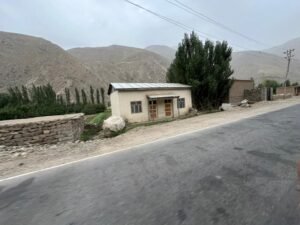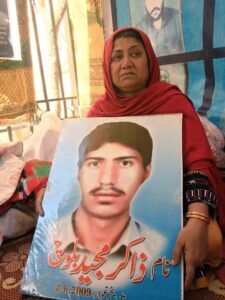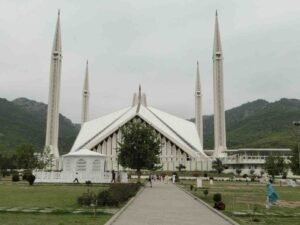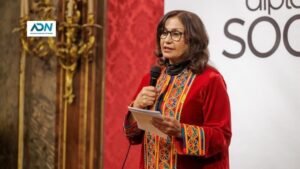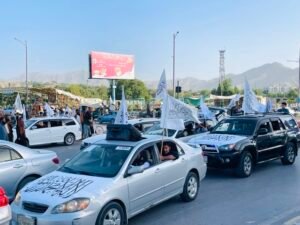Billions for Punjab, Crumbs for Balochistan

Women of Balochistan. Photo: @AA Baloch
By Kadeem Baloch
Balochistan, Pakistan’s largest province by area, continues to suffer from systemic neglect by the federal government. Despite its strategic location and immense natural resources, the province remains underdeveloped, with critical infrastructure projects delayed or entirely ignored. The ongoing insurgency in Balochistan is not merely a law and order issue but a consequence of decades of economic deprivation, political marginalization, and bureaucratic indifference.
Last week, the federal government approved over a dozen major development projects amounting to a staggering USD 4.6 billion. Among these projects was the Lahore-Sahiwal-Bahawalnagar Motorway, a 295-kilometer road that will cost the national USD 1.55 billion. While such infrastructure projects are vital for connectivity and economic growth, the absence of similar initiatives in Balochistan underscores the government’s lopsided priorities. The province, which lacks a single kilometer of motorway, continues to rely on dilapidated single-lane highways. The most infamous of these is the Quetta-Karachi highway, often referred to as the “Killer Highway,” which has claimed thousands of lives due to its hazardous conditions.
Despite the urgent need for better roads, the federal government has released only USD 121 million out of the required USD 790 million for the dualization of this critical highway. At this sluggish pace, it would take over 13 years to complete the project, leaving countless travelers at risk. This stands in stark contrast to Punjab, where motorways are being built in close proximity to existing ones with full federal funding.
Balochistan has also been marginalized in one of Pakistan’s most ambitious infrastructure initiatives—the China-Pakistan Economic Corridor (CPEC). Out of the total USD 25.4 billion allocated to CPEC projects, only USD 3.2 billion has been spent on completed and under-construction projects in Balochistan. The much-touted Gwadar development received a mere USD 890 million, while highway projects in the province were allocated only USD 410 million. More alarmingly, CPEC did not include a single motorway for Balochistan, despite the fact that Gwadar is positioned as the crown jewel of the initiative.
The injustice does not end with infrastructure. Balochistan receives only 3.66% of Pakistan’s total water share, even though it makes up 44% of the country’s land area. As a result, 62% of the province’s population lacks access to safe drinking water. The Kechi Canal, initially planned to irrigate 713,000 acres of land, remains incomplete due to corruption and bureaucratic hurdles. Even worse, two-thirds of its benefits were allocated to Punjab, while a significant portion of the land was distributed among retired army personnel instead of local farmers.
Similarly, the lack of functioning dams and irrigation systems has turned 58% of Balochistan’s land into desert. Droughts have severely impacted agriculture, pushing rural populations further into poverty. In 2015, 71.2% of Balochistan’s population lived below the poverty line, far exceeding the national average of 38.8%. Yet, the federal government has made little effort to address this crisis.
Balochistan is rich in natural resources, including gas, coal, and minerals. Despite this wealth, the local population sees little benefit from resource extraction. Sui gas, which was discovered in Balochistan in 1952, has powered industries and homes across Pakistan, yet many districts in Balochistan still lack access to gas supply. The province contributes over 40% of Pakistan’s total gas production, but its own residents remain deprived of basic utilities.
Moreover, large-scale mining operations, including those extracting copper and gold from Reko Diq, have been conducted with little input or benefit for local communities. The revenue generated from these projects is funneled into the federal treasury, with minimal reinvestment in Balochistan. The lack of employment opportunities for local youth in these industries only exacerbates the region’s economic despair and fosters anti-state sentiments.
Balochistan’s political representation in Pakistan’s federal structure has been historically weak. Despite its vast territory and resources, the province has the lowest number of seats in the National Assembly due to its sparse population. This results in a lack of political influence when it comes to national policymaking.
Furthermore, human rights violations in Balochistan remain a pressing issue. Reports of enforced disappearances, extrajudicial killings, and military operations targeting dissenting voices have created an atmosphere of fear. Journalists and activists face harassment, making it difficult to raise awareness about the province’s plight. The ongoing military presence has only deepened the divide between the people of Balochistan and the central government, reinforcing perceptions of occupation rather than inclusion.
The continued neglect of Balochistan is not due to financial constraints but rather a political and bureaucratic structure that overwhelmingly favors Punjab. With its larger population, Punjab dominates Pakistan’s federal decision-making apparatus, ensuring that development funds disproportionately flow in its direction. The violation of the National Fiscal Pact, which discourages federal funding for projects that do not benefit multiple provinces, further exemplifies the central government’s disregard for equity.
The government’s indifference to Balochistan’s grievances can also be attributed to its reliance on military force rather than genuine political and economic engagement. Armed resistance by various Baloch groups has been met with heavy-handed military operations, extrajudicial killings, and enforced disappearances. Instead of addressing the root causes of the insurgency—poverty, lack of basic services, and political disenfranchisement—the state continues to rely on coercion. This only deepens the resentment of the local population and fuels the demand for autonomy.
The ongoing turmoil in Balochistan is a direct result of decades of state neglect. The province’s demands for autonomy and, in some cases, independence, stem from the blatant disregard for its development needs and political rights. If Pakistan wishes to maintain national unity, it must abandon its Punjab-centric policies and ensure equitable development across all regions. Otherwise, the continued indifference toward Balochistan will only strengthen the call for self-rule—an outcome that could have dire consequences for the country’s future.
The author chooses a pseudonym. Kadeem Baloch is a freelance journalist based in Pakistan.
Note: The contents of the article are of sole responsibility of the author. Afghan Diaspora Network will not be responsible for any inaccurate or incorrect statement in the articles.


